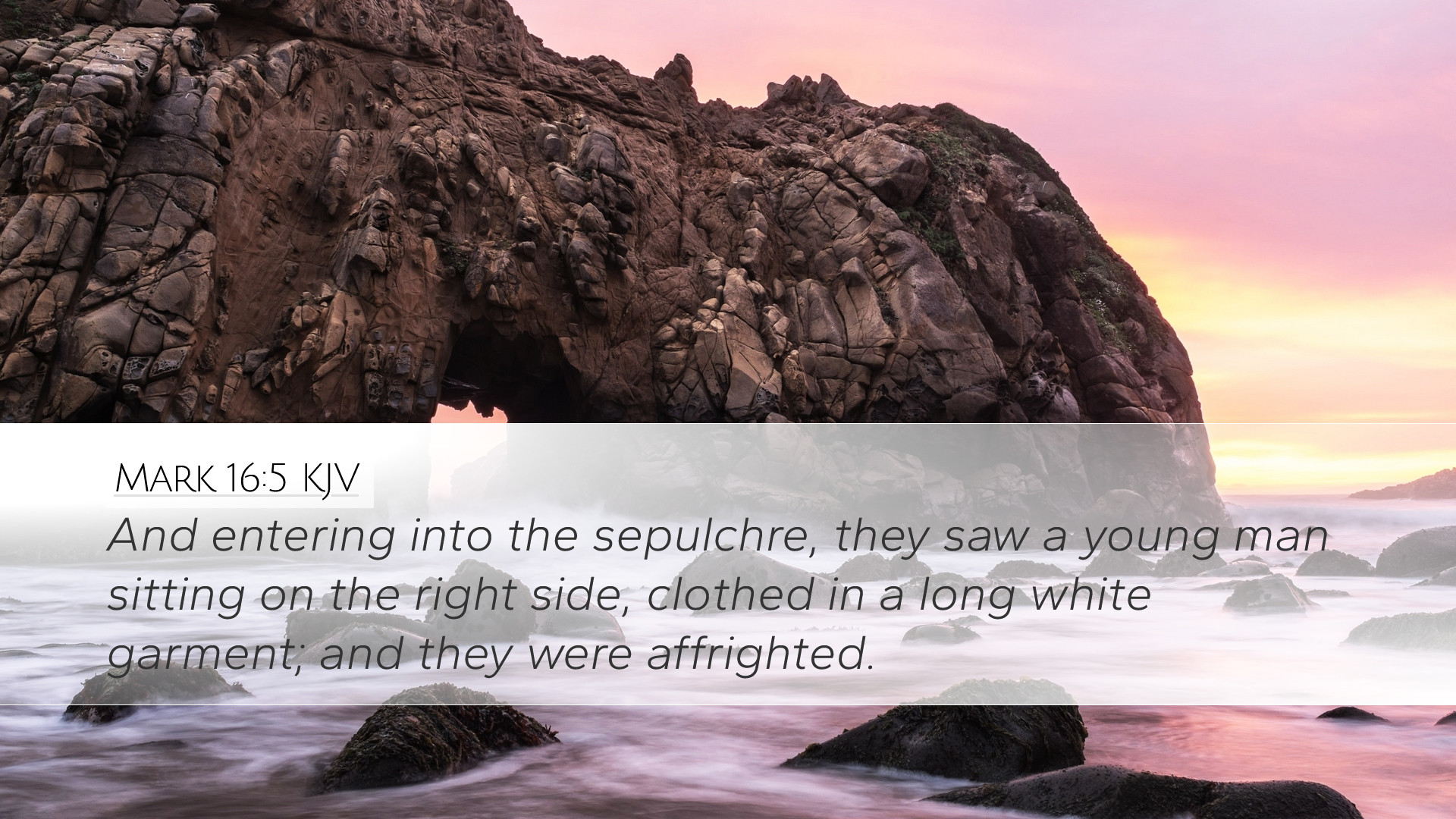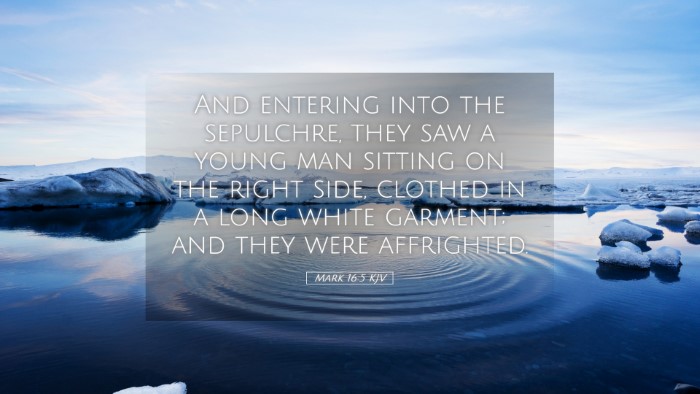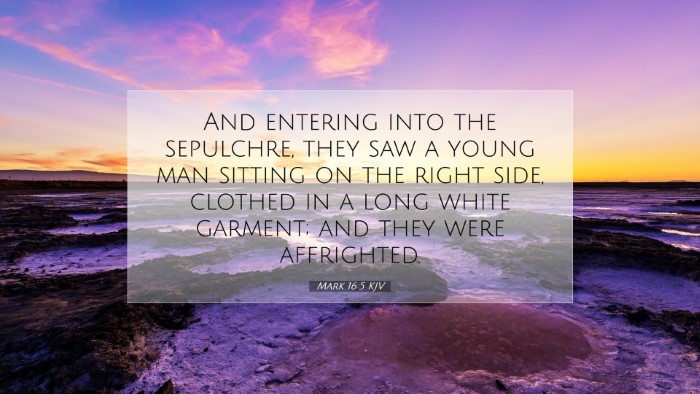Old Testament
Genesis Exodus Leviticus Numbers Deuteronomy Joshua Judges Ruth 1 Samuel 2 Samuel 1 Kings 2 Kings 1 Chronicles 2 Chronicles Ezra Nehemiah Esther Job Psalms Proverbs Ecclesiastes Song of Solomon Isaiah Jeremiah Lamentations Ezekiel Daniel Hosea Joel Amos Obadiah Jonah Micah Nahum Habakkuk Zephaniah Haggai Zechariah MalachiMark 16:5
Mark 16:5 KJV
And entering into the sepulchre, they saw a young man sitting on the right side, clothed in a long white garment; and they were affrighted.
Mark 16:5 Bible Commentary
Commentary on Mark 16:5
Mark 16:5 states:
"And entering into the sepulchre, they saw a young man sitting on the right side, clothed in a long white garment; and they were affrighted."
Introduction
The account of the resurrection of Jesus is one of the most profound moments in the New Testament, capturing the heart of Christian faith. The verse Mark 16:5 depicts the moment when the women arrive at the tomb and encounter a supernatural being. It serves as a pivotal point for understanding the resurrection and its implications for believers.
Contextual Background
Mark's Gospel presents a vivid narrative that emphasizes the humanity of Jesus while concurrently revealing His divine nature. The resurrection narrative serves to confirm Jesus' teachings and foreshadow the transformation of believers following His ascension.
The Setting
The scene is set early on the first day of the week after Jesus' crucifixion, a time when despair and hopelessness permeated the hearts of His followers. The women, seeking to anoint Jesus' body, display devotion in the face of loss.
Analysis of the Verse
“Entering into the sepulchre”
The act of entering the sepulchre signifies an important step in the journey of faith. The women take the courageous step to approach the tomb, representing the movement from mourning to the discovery of hope.
“They saw a young man”
The description of the figure as a “young man” indicates a messenger from God, often understood to be an angel. This angelic presence brings a divine revelation that is pivotal for the unfolding resurrection narrative.
“Sitting on the right side”
Seated at the right side carries significant symbolic weight in biblical literature, often denoting a position of honor and authority. This young man's placement provides assurance that he is a legitimate messenger of God, imbued with divine authority to proclaim the good news of the resurrection.
“Clothed in a long white garment”
The “long white garment” is emblematic of purity and holiness. The radiance of this attire further emphasizes the otherworldly nature of the visitor, highlighting the miraculous event of the resurrection. According to Adam Clarke, this attire signifies the glory of the resurrection, reflecting a new creation.
“And they were affrighted”
The reaction of the women is significant. Their fear conveys the weight of the moment and their understanding of the gravity of the encounter. According to Matthew Henry, such fear is a natural response to encountering the divine, emphasizing the otherness and majesty of God’s messengers. It illustrates the contrast between human frailty and divine power.
Spiritual Implications
Faith and Fear
This moment encapsulates the tension between fear and faith, a recurring theme throughout scripture. While fear grips the women, their courage to seek Jesus, even in death, is commendable. Albert Barnes notes that this duality reflects the human experience in faith where fear can lead to a deeper understanding of divine truth.
The Transition from Death to Life
The women’s encounter at the tomb symbolizes the shift from despair to hope, from death to life. The resurrection is the cornerstone of Christian theology, assuring believers of new life in Christ. Mark 16:5 serves as a crucial affirmation of this divine truth, as articulated in the various commentaries.
The Role of Women in the Resurrection Narrative
The participation of women as the first witnesses of the resurrection demonstrates both their faithfulness and the inclusive nature of the Gospel. It reveals God’s intention to elevate those marginalized in society, bringing forth a significant theological reflection on the nature of God's revelation among all people.
Conclusion
In summary, Mark 16:5 provides a profound insight into the resurrection narrative, showcasing the encounter of the women with the divine messenger. Their fear, contrasted with the truth of the resurrection, invites believers into a deeper journey of faith. The commentaries by Matthew Henry, Albert Barnes, and Adam Clarke highlight the theological nuances of this passage, underlining its importance in Christian doctrine and its powerful implications for faith today.


